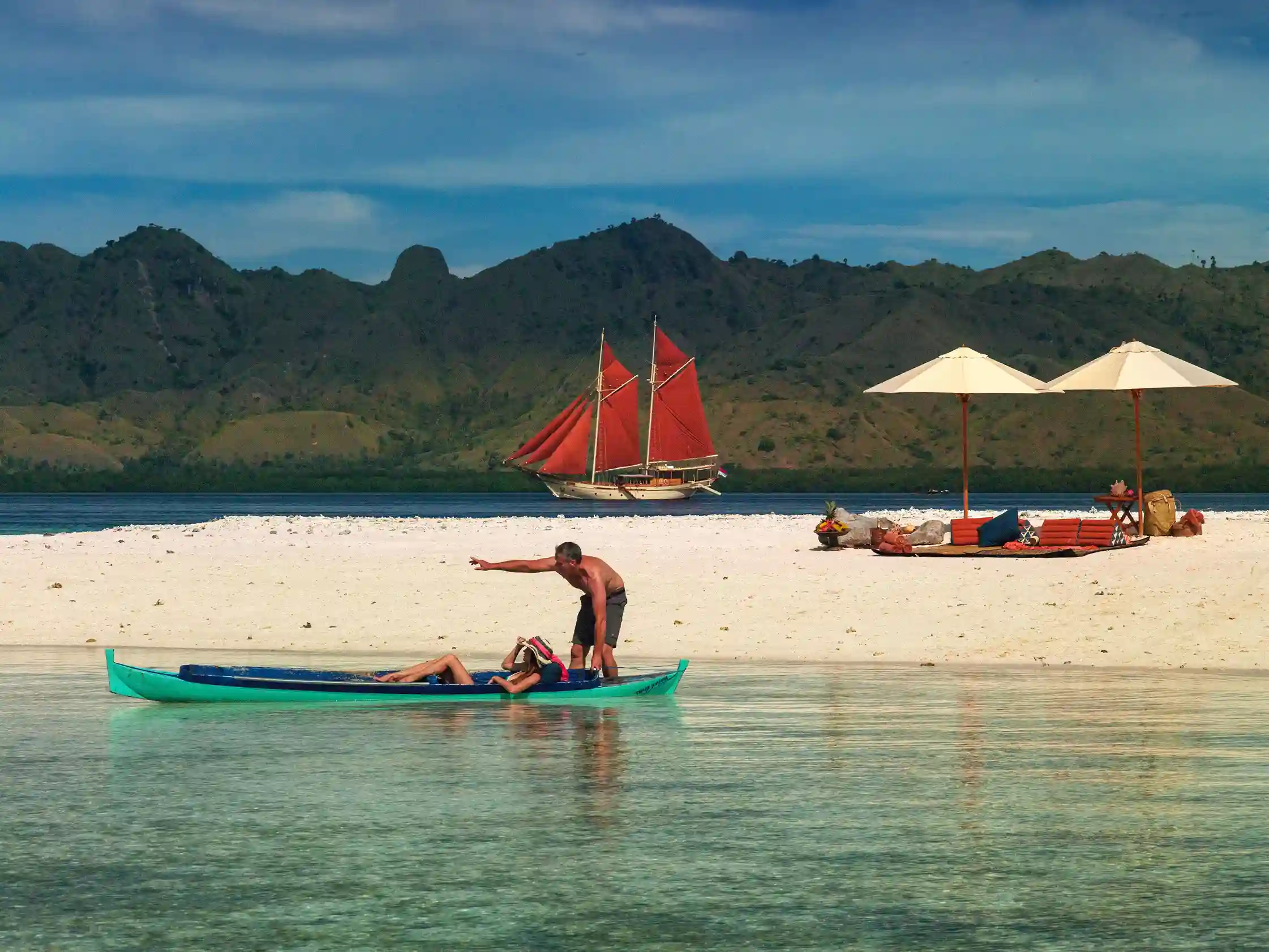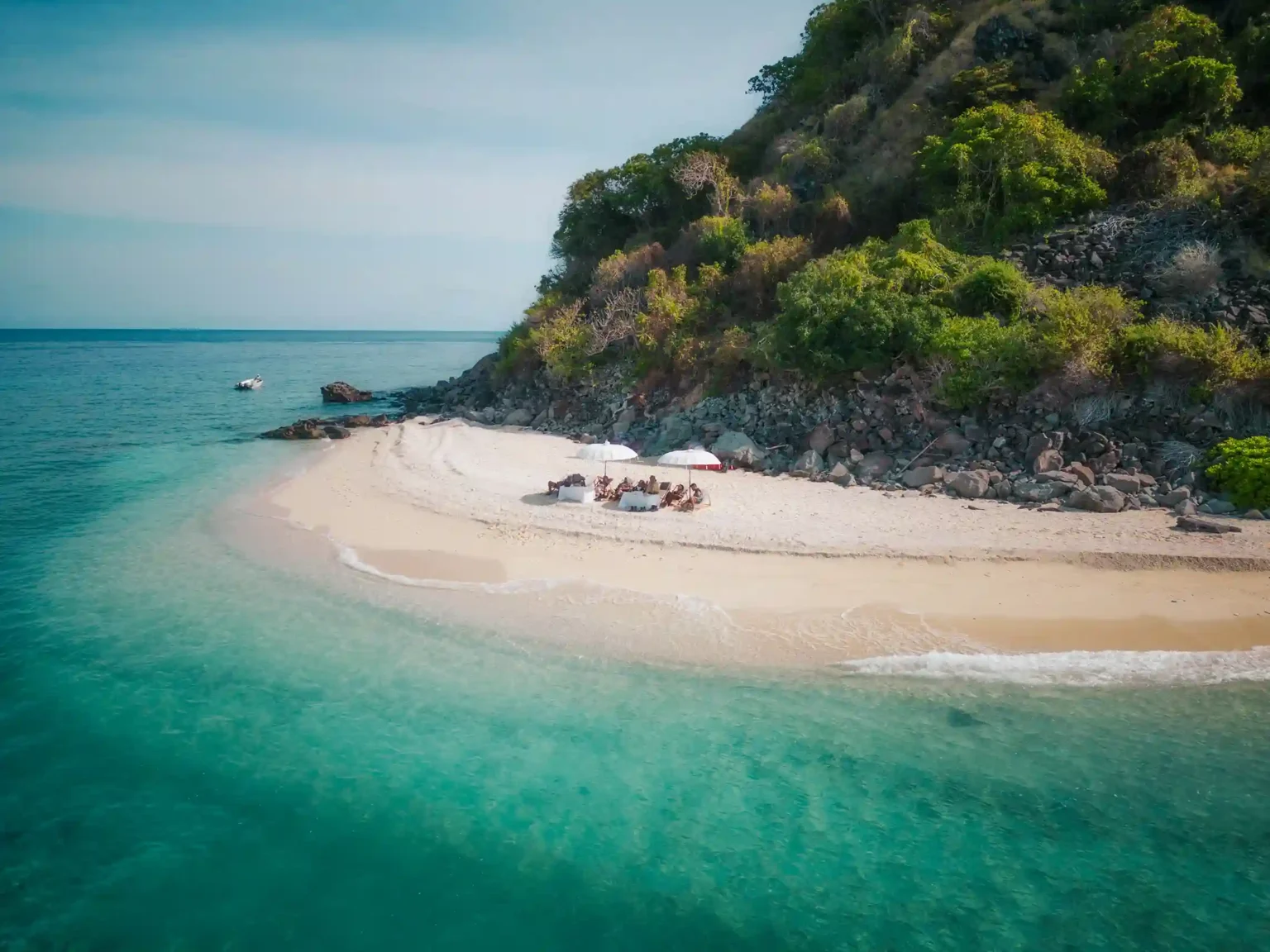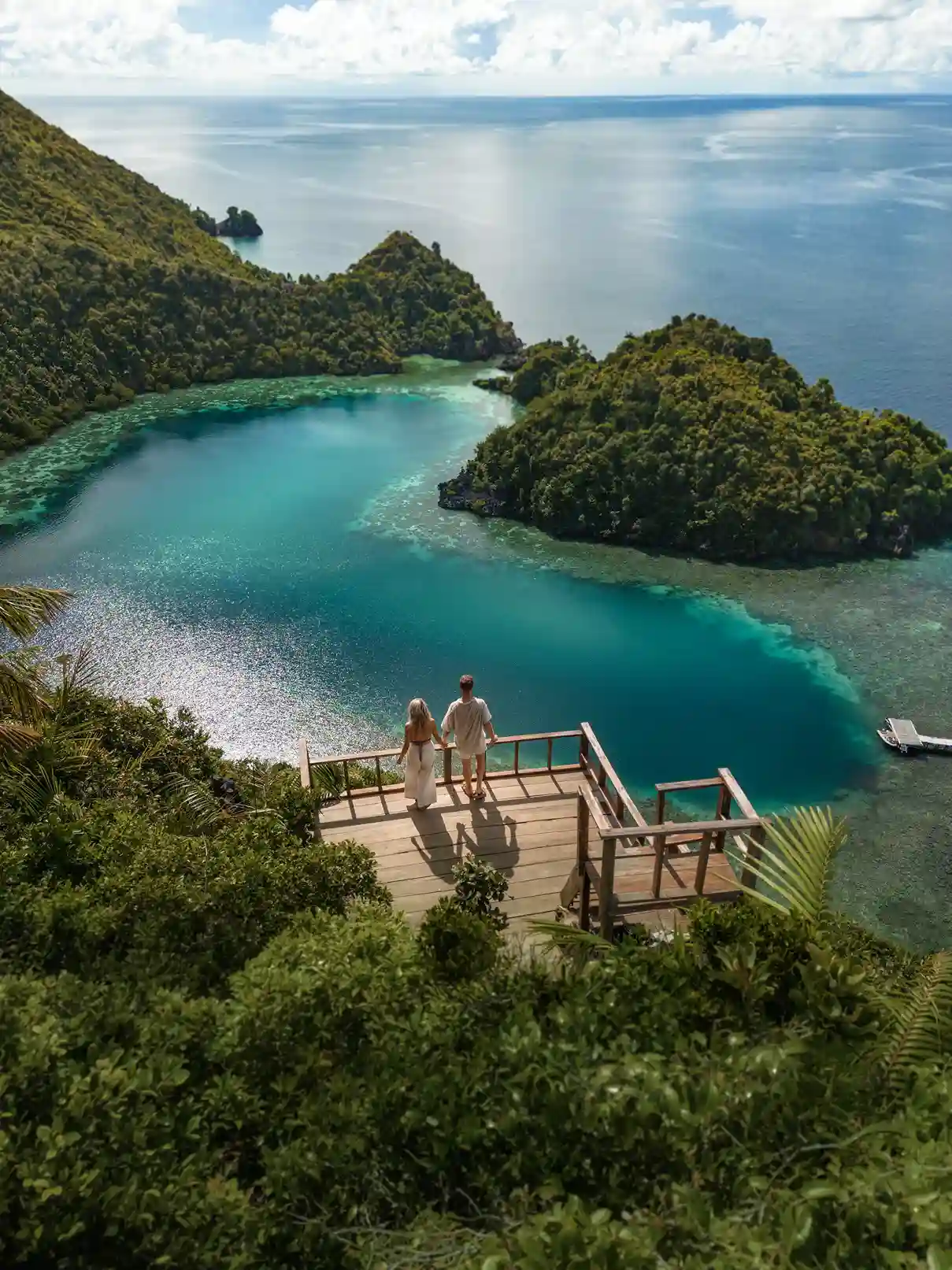The history of Phinisi started from a legend from Southern Sulawesi’s ancestral tradition. For your information, this vessel was used for commercial trades for a long time.
Nowadays, Phinisi has become a sophisticated tradition of maritime. The unique architecture is a combination of old construction you can usually find in Bugis-Makassar culture.
Besides that, it also adopts the architecture of modern American & European ships from the 19th century.
The Combination of Timeless Design and 21st-Century Engineering
In the past, wooden Phinisi from Indonesia was used to carry spices, textiles, and sandalwood. In Sulawesi, boat builders take years to make the vessels.
Today, people use modern Phinisi yachts for diving, cruising, and even recreation. For the materials, we use fine teak & ironwood from Indonesia.
So, you can select from different designs and finishes to meet the needs of today’s smart travelers.
For example, you can consider ultra-wide areas for relaxing or yoga, or you prefer luxurious soundproof suites that are perfect for a night’s sleep.
Besides that, the new builds feature the newest technological systems with modern standards to ensure a maximum level of efficiency, sustainability, comfort, and quality.
The Story of Phinisi
When it comes to the story of Phinisi Indonesia, we can explain it through the following points.
Borobudur – 1412
Traditional sails and vessels from Indonesia first appeared in the Borobudur Temple.
If you walk around the temple & pay attention to the relief carvings, you will see some panels depicting ships that crossed to Indonesia.
Through the ocean, the ships brought the Buddha’s followers who were looking for enlightenment.
Majapahit – 1620
The Majapahit navy used the Borobudur vessels with other wooden ships. For your information, the Empire of Majapahit used jongs as the naval power’s main source.
The jong, Jung, or djong (in English: junk) is a kind of ancient ship that came from Jawa, widely used by Malay and Javanese sailors.
Early 20th Century – 1920
In around 1906, the first Phinisi from Sulawesi was first built. Phinisi was an engineless trading ship built & sailed by South Sulawesi’s seafaring cultures in the 20th century.
They came with a topsail-ketch rig that is tall and powerful as well as a gaff that stood permanently.
History of Phinisi: Sulawesi’s Traditional Vessel
Talking about the history of Phinisi, this vessel came from South Sulawesi.
And, the people of the Konjo tribe who lived at Bulukumba regency are those who first made this boat in the 19th century.
The sailors from that tribe had a great idea. They combined Western schooner rigs with their traditional one.
Then, they called it the Pinisi rig. For your information, Pinisi is from 2 words: picuru and binisi.
‘Picuru’ means ‘good example’ whereas ‘binisi’ means ‘a small & agile fish’. It is the king who gave this name to honor the invention of sailors.
The Konjo tribe used this boat as a means of transportation & fishing purposes. You need to know that Phinisi featured a specific hull (palari) with enough room for big cargo.
In the stern, there is only a cabin for the captain. So, the crews sleep in the deck or cargo room.
They used a sail named nade. It is the western ships that inspire this.
The Phinisi Boat’s Design
Originally, Phinisi Indonesia features 2 mats and has 7-8 sails. It is different from the western ships that have three mats as Phinisi has only two.
Its foremast is a bit taller compared to its stern mast while the sails line up perfectly in the center.
Every mast has a small triangle as well as a big rectangular sail and the large one at the bottom.
And, other sails, usually consisting of three or four small triangle sails, are tied tightly from its foremast to the bowsprit.
For your information, a standard ship of Phinisi is about 20 to 35m long, even though there’s a smaller variant that is around 10m long only, specifically for fishing.
Moreover, the newer model reaches 50 meters and fits around 30 people. However, there are only a few of these Phinisi and most of them are for a luxe cruise trip.
Modern Evolution of Phinisi Boats
Phinisi’s design changes from year to year to fit today’s era. In about 1970, the function of the boat was as a mass transportation and cargo.
Then, they began implementing various kinds of hulls named Lambo which fit more rooms for cabins.
And motorized ship invention happened shortly after. We can call the ships changed into motor versions as Perahu Layar Motor.
Even though they removed the sails as it is redundant, some older Phinisi vessels with a motor still had mats for aesthetic purposes.
Later, many new Phinisi vessels begin to include the back masts and the sails so that they look like the original ones. Mostly, this Phinisi type is for a leisure cruise.
Well, that’s the history of Phinisi.
Now, you can experience sailing with an authentic boat from Phinisi. In Labuan Bajo, Phinisi boats are available for a private charter. Island hopping with phinisi boat is being popular here in Labuan Bajo.
The best spot is Komodo National Park, specifically Komodo Island where you can see endemic animal called Komodo Dragon. It’s rare!
Read more:
7 Interesting Facts About Komodo National Park You Need to Know Before Visiting























Your article provides an in-depth analysis that deepened my understanding. Thank you for the insights!
Wow, incredible weblog format! How lengthy have you ever been blogging for?
you make blogging look easy. The full look of your website
is magnificent, let alone the content!